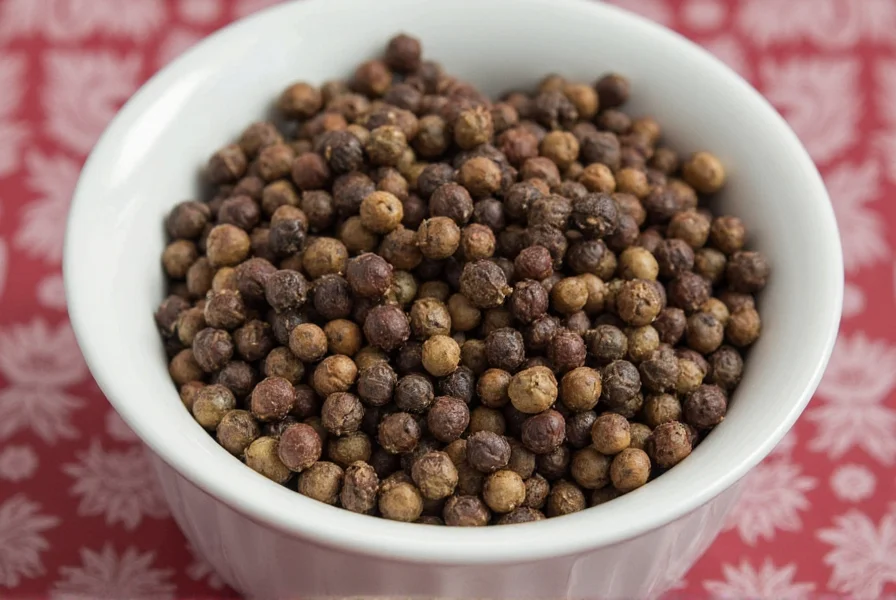Cracked Pepper: The Secret to Flavorful Cooking (and a Few Surprising Facts)
Table of Contents
Introduction
When it comes to spices, pepper is one of the most versatile and widely used ingredients in kitchens around the world. But not all pepper is created equal. Enter cracked pepper, a form of pepper that offers a unique texture and flavor profile compared to its whole or ground counterparts.
In this article, we’ll dive into what cracked pepper is, how to use it, and why it might just be your new favorite spice. We’ll also provide a detailed buying guide and share some fun facts you didn’t know about this humble yet powerful ingredient.
What Is Cracked Pepper?
Cracked pepper is simply black pepper that has been coarsely ground, but not fully powdered. It’s made by crushing whole peppercorns into larger pieces, resulting in a granular texture that adds both visual appeal and a burst of flavor when used in cooking.
Unlike ground pepper, which can be too fine and lose its potency quickly, cracked pepper retains more of its essential oils and aromatic compounds, giving it a more intense and complex flavor. This makes it ideal for dishes where you want a bit of crunch and a bold taste.
How to Use Cracked Pepper
Cracked pepper is incredibly versatile and can be used in a wide range of dishes. Here are a few popular ways to incorporate it into your cooking:
- Salads: Sprinkle it over fresh salads for an extra kick of heat and aroma.
- Soups and Stews: Add it towards the end of cooking to preserve its flavor.
- Roasted Vegetables: Toss with olive oil and season with cracked pepper for a simple yet flavorful side dish.
- Grilled Meats: Use it as a seasoning before grilling for a smoky, spicy finish.
- Cheese Boards: A sprinkle of cracked pepper pairs beautifully with aged cheeses and cured meats.
Tips for Choosing the Best Cracked Pepper
Not all cracked peppers are the same. Here are a few tips to help you choose the best one:
- Check the Origin: Peppercorns from India, Vietnam, and Indonesia are known for their high quality and distinct flavors.
- Look for Freshness: Cracked pepper should have a strong, pungent aroma. If it smells stale or musty, it's likely old.
- Choose the Right Coarseness: Some people prefer a finer crack, while others like a more coarse texture. Experiment to find your preference.
- Opt for Organic Options: If possible, choose organic cracked pepper to avoid pesticides and ensure better flavor.

Buying Guide: What to Look For
If you're looking to buy cracked pepper, here's a breakdown of what to consider:
| Feature | Importance | Recommendation |
|---|---|---|
| Origin | High | India, Vietnam, or Indonesia for the best quality. |
| Freshness | High | Buy in small quantities and store in airtight containers. |
| Coarseness | Medium | Choose based on your recipe needs—coarse for texture, fine for even distribution. |
| Organic Certification | Low to Medium | Optional, but beneficial for health-conscious consumers. |
| Packaging | Medium | Opt for dark glass jars or airtight containers to protect from light and moisture. |
Use Cases: Ideal for seasoning roasted vegetables, grilled meats, soups, and sauces. It also works well on cheese boards and as a finishing touch on dishes like pasta or risotto.
Target Audience: Home cooks who want to elevate their meals, professional chefs seeking depth in flavor, and spice enthusiasts eager to experiment.
Suitable Occasions: Weeknight dinners, holiday feasts, outdoor barbecues, and casual gatherings.
Fun Facts About Cracked Pepper
Here are a few surprising facts about cracked pepper that might change the way you think about this everyday spice:
- It Was Once Used as Currency: In ancient times, pepper was so valuable that it was used as money in some regions of Europe and Asia.
- Black Pepper Is Actually Green: The peppercorns start off green and are dried to become black. White pepper comes from the same plant but is processed differently.
- Cracked Pepper Can Last Longer Than Ground Pepper: Due to its coarser texture, it retains its flavor longer and doesn't go bad as quickly.
- It Has Health Benefits: Pepper contains piperine, a compound that may aid digestion and boost metabolism.
- It's Not Just for Spicy Dishes: Cracked pepper can enhance the flavor of sweet dishes too, like chocolate desserts or fruit salads.
Conclusion
Cracked pepper is more than just a seasoning—it's a flavor enhancer, a textural element, and a key player in many global cuisines. Whether you're a seasoned chef or a home cook experimenting with new ingredients, adding cracked pepper to your pantry can take your dishes to the next level.
Remember, the right cracked pepper can make all the difference. So next time you're reaching for a spice, don’t forget to grab that little jar of cracked pepper. Your taste buds will thank you.
And if you're wondering, yes, cracked pepper is the secret ingredient that turns a good meal into something unforgettable.










 浙公网安备
33010002000092号
浙公网安备
33010002000092号 浙B2-20120091-4
浙B2-20120091-4